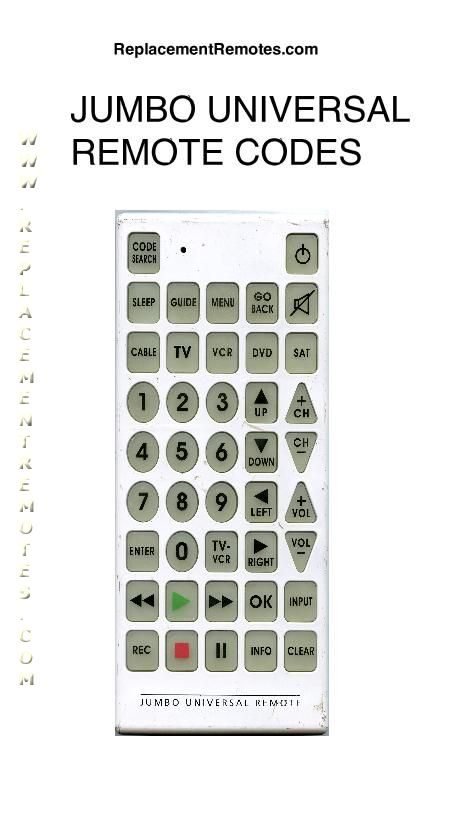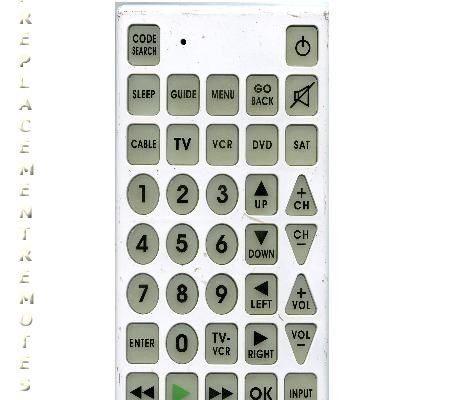
Let me explain: universal remotes like the One For All are magic wands for your devices, but they need a secret handshake—the code—to start working. That’s where things get tricky if you’ve tossed the packaging or the manual is long gone. But don’t stress. There are ways to find that magical code even if you feel like you’re flying blind.
Understanding Universal Remotes and How They Work
Universal remotes sound high-tech, but they’re basically translators. Every TV, soundbar, or streaming box speaks a slightly different “language,” and these remotes come packed with tons of “codes”—little instructions that tell the remote how to talk to each device. One For All is a popular brand because it works with so many gadgets, from old-school TVs to the newest streaming sticks.
So, what’s the big deal about the code? Think of it like the password to your Wi-Fi. Without it, you’re not getting in, no matter how many times you wave the remote at the TV. Each code is a special sequence of numbers that tells your remote exactly how to control the specific make and model of your device. If you’re missing the code, the remote has no idea what to do, kind of like a dog waiting for a command it never hears.
That’s why most manuals have pages full of codes for every brand under the sun. But if your manual has vanished into the void (maybe eaten by the couch cushions), you’ll need to get creative. Luckily, One For All remotes are designed for real people who lose things, so there are built-in ways to find your code without the physical manual.
Why Codes Matter (And Why Losing Them Is So Common)
You might be wondering why these codes still matter in 2024, when everything else seems “smart” and automatic. Here’s the thing: device manufacturers use different signals, and universal remotes have to match those exactly—otherwise, pressing the volume button might change the channel or do nothing at all.
Losing the manual is basically a rite of passage for remote owners. Maybe yours went out with the recycling, or maybe it’s buried in that drawer where old phone chargers go to die. Either way, it’s frustrating. The good news is, you’re not locked out for good.
Some folks panic and buy a new remote, but most of the time, the code can be recovered with a little patience and some button pressing. And honestly, the process is kind of empowering once you know how it works. You’ll appreciate your universal remote a lot more when you’ve unlocked its potential yourself.
Using the Auto-Search Feature to Find Your Device Code
If you don’t have the One For All remote manual, the auto-search method is your best friend. Nearly all versions of these remotes let you search for the right code by cycling through options until your device reacts. It feels a bit like trying combinations on a lock until something clicks.
Here’s a walk-through of what you typically do:
- First, turn on the device you want to control—your TV, DVD player, whatever.
- Press and hold the “Set” or “Setup” button on your One For All remote until a light blinks (usually red or green, depending on model).
- Press the device button (like “TV” or “AUX”). Now, point the remote at your device and start pressing the “Power” button over and over. Each time you press, the remote tries a new code.
- Eventually, the device should turn off—this means you’ve found the right code! Press the “Enter” or “OK” button to lock it in.
Using auto-search is a bit tedious but much better than giving up. It takes a few minutes, but you’ll probably never have to do it again.
Don’t worry if it doesn’t work the first time. Sometimes you need to repeat the process, or the remote might need fresh batteries (pro tip: weak batteries make things glitchy). And yes, it’s completely normal to feel like a code hacker while doing this.
Finding Codes Online When the Manual Is Missing
Let’s say the auto-search route isn’t working or feels too slow for your taste. The next best option? The internet! Most major universal remote brands maintain online databases of codes—including One For All—so you can search by brand and device.
Here’s how you can do it:
- Visit the official One For All website (or just Google “One For All remote code finder”).
- Enter your remote’s model number (usually found in the battery compartment or on the back).
- Type in the brand of the device you want to control.
- The site will shoot out a list of possible codes. Try them one by one until your device responds.
It’s not as high drama as the auto-search, but it’s much faster—especially if you have an obscure device. Plus, many users have shared their experiences in online forums and tech pages. If you get stuck, you’re almost guaranteed to find someone who’s had the same problem and cracked it.
It’s wild how many people have faced the “missing manual” dilemma. Sometimes reading about someone else’s frustration makes the process feel less lonely.
And if you’re a chronic manual-loser like me, bookmark that website for next time.
Manual Programming: Entering the Code Directly
If you’ve managed to find the right code from a database or a helpful friend, you can enter it manually. This method feels a little retro, like dialing a friend’s phone number by heart—but it works and is pretty straightforward.
Let me walk you through it:
- Turn on the device you want to sync with your universal remote.
- Press and hold the “Setup” button until the LED light stays on.
- Press the device button (like “TV,” “VCR,” or “SAT”).
- Use the remote’s number pad to enter your code. The LED will blink or turn off if you did it right.
- Test out a few keys (like Power, Volume) to make sure everything works.
If nothing happens, double-check that you entered the code correctly (no pressure, but it’s easy to fat-finger a number). If it still doesn’t respond, just try the next code from the online list.
Strong tip: Keep a little sticky note inside your battery compartment with the final working code. Future you will thank present you.
Troubleshooting Common Remote Problems
Troubleshooting is a huge part of the universal remote journey. Maybe you got the code right, but certain buttons don’t work, or the device only partially responds. That’s not unusual, and it doesn’t mean you’re doomed.
Here’s a quick rundown of what to check if things aren’t syncing:
- Batteries: Old or weak batteries are sneaky culprits. Swap in new ones and try again.
- Code Mismatch: Sometimes multiple codes work for the same brand, but only one matches all functions. Cycle through all the available codes.
- Device Compatibility: Some very new or very old devices might not be fully supported, especially if your remote is from the “pre-Netflix” era.
- Obstacles: Make sure you’re pointing the remote directly at your device, with nothing in the way.
It’s a little like tuning a guitar by ear—you’ll get there, but it might take a few tries. And if you really get stuck, One For All customer support is actually pretty responsive, or you can take your remote into an electronics store for a quick test.
Resetting Your One For All Remote (When All Else Fails)
Sometimes everything goes haywire, and your One For All remote won’t sync, pair, or respond no matter what you try. At this point, a reset might be in order. Think of it as hitting the refresh button on your remote’s brain.
Most models have a simple reset process:
- Press and hold the “Setup” button until the LED turns on.
- Enter the reset code (usually 9-8-1, but check your model online to be sure).
- The LED blinks twice or three times—now the remote is back to factory settings.
This wipes out all programmed codes, so you’ll need to re-enter the code for each device. It’s a bit of a pain, but sometimes starting fresh is the only way to squash weird glitches or if someone programmed the remote incorrectly before you.
It’s a little like restarting your phone after it freezes—frustrating, but almost always effective.
Just be sure you have your code(s) handy before resetting, so you’re not scrambling to find them all over again.
Comparing Universal Remotes vs Device-Specific Remotes
You might be wondering, “Why not just use the boring remote that came with my TV?” Here’s my take—universal remotes like One For All are a huge win for reducing clutter and confusion, especially if you’re managing a lot of devices (think: TV, soundbar, streaming box, Blu-ray player… the list goes on).
Device-specific remotes are usually easier to pair since they’re made for one job. But if you lose one (which happens), getting a replacement from the manufacturer can be expensive or take forever. Universal remotes, on the other hand, can fill in for almost any lost remote, as long as you have the code.
They’re also great for grandparents, guests, or anyone who gets overwhelmed by multiple remotes. The downside? You gotta do a little work to sync and program everything, and not every button will always map perfectly. But with a little patience, it’s worth it.
Final Thoughts: Don’t Let a Lost Manual Stop You
Losing the manual—or never having it to begin with—isn’t the end of your One For All universal remote. Honestly, once you know the tricks for finding the code—auto-search, online databases, manual entry, and resetting—you’re set for pretty much any “lost code” emergency in the future.
It’s kind of satisfying to take charge and troubleshoot this stuff yourself, instead of feeling helpless every time you lose a remote or a manual disappears. Next time you’re wrestling with a stubborn device, remember: you’re just a few button presses away from getting your entertainment setup running smoothly again. And if you have a little notepad handy, jot down those codes for next time—future you will be eternally grateful. Happy channel surfing!
